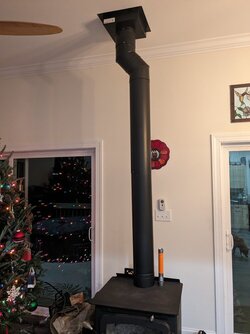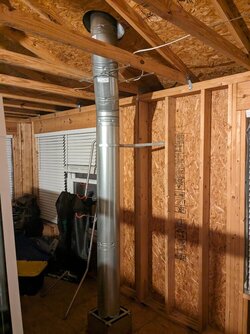Well, for the first time in a few years of lightly using my wood stove, my CO alarm (thankfully) went off last night while we were all sleeping and woke us up. Called 911, FD came out and confirmed CO and vented the whole house. The wood stove is the only combustion appliance I have in my house so it had to be that.
I suspect what happened is: As I went to sleep, the fire was dying and getting weaker. At some point the draft reversed (it seems I have some negative pressure in my house) and this caused the burning wood charcoals that remained in the stove to just pool CO inside the house.
One possible mistake I made was that I had the flue on the most closed setting (I just left it at that setting once I got up to temp originally) rather than the most open setting. Perhaps whenever I decide to let a fire burn out I should put it on the most open setting? But I don't think I have had an issue with this in the past.
I also wonder if using a bathroom fan while take a shower, as the fire went out, perhaps caused the draft to reverse in the stove.
I will have a professional company come take a look at everything and see what they say, but any thoughts on the above?
I suspect what happened is: As I went to sleep, the fire was dying and getting weaker. At some point the draft reversed (it seems I have some negative pressure in my house) and this caused the burning wood charcoals that remained in the stove to just pool CO inside the house.
One possible mistake I made was that I had the flue on the most closed setting (I just left it at that setting once I got up to temp originally) rather than the most open setting. Perhaps whenever I decide to let a fire burn out I should put it on the most open setting? But I don't think I have had an issue with this in the past.
I also wonder if using a bathroom fan while take a shower, as the fire went out, perhaps caused the draft to reverse in the stove.
I will have a professional company come take a look at everything and see what they say, but any thoughts on the above?



